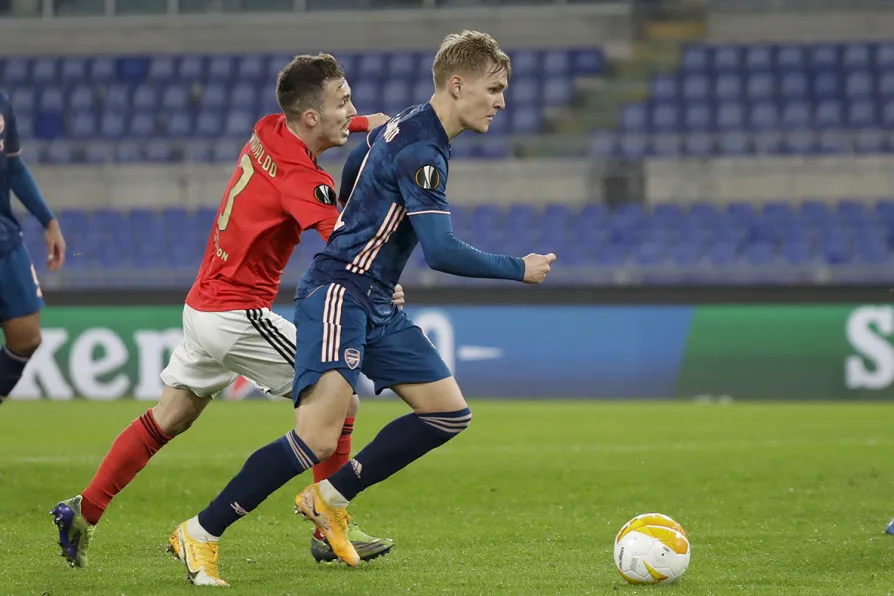
 Benfica's Alex Grimaldo, left, and Arsenal's Martin Odegaard fight for the ball during the Europa League round of 32 first leg soccer match between Benfica and Arsenal, at Rome's Olympic Stadium
Benfica's Alex Grimaldo, left, and Arsenal's Martin Odegaard fight for the ball during the Europa League round of 32 first leg soccer match between Benfica and Arsenal, at Rome's Olympic Stadium
WHILE Arsenal’s 1-1 Europa League draw with Benfica in Rome this week wasn’t the most effective performance, there was an instructive moment of magic that thrilled from the Gunners’ Real Madrid loanee Martin Odegaard.
In a crowded box, the former teen prodigy showed what hardened pros might call “quick feet,” using his abundant technique and no little guile to move the ball in a confined space — bamboozling opponents bearing down on him.
It was as fleeting as it was glorious: blink and you would have missed it. Which is exactly what the Gunners’ original temporary signing from the Bernabeu, Dani Ceballos, did with the resulting chance Odegaard created.

Mikel Arteta has been receiving criticism in some quarters for his supposed negativity – but Arsenal reporter LAYTH YOUSIF insists the Gunners boss is on the right lines

Substitutes Gabi Martinelli and Leo Trossard seal Champions League victory in Bilbao
















